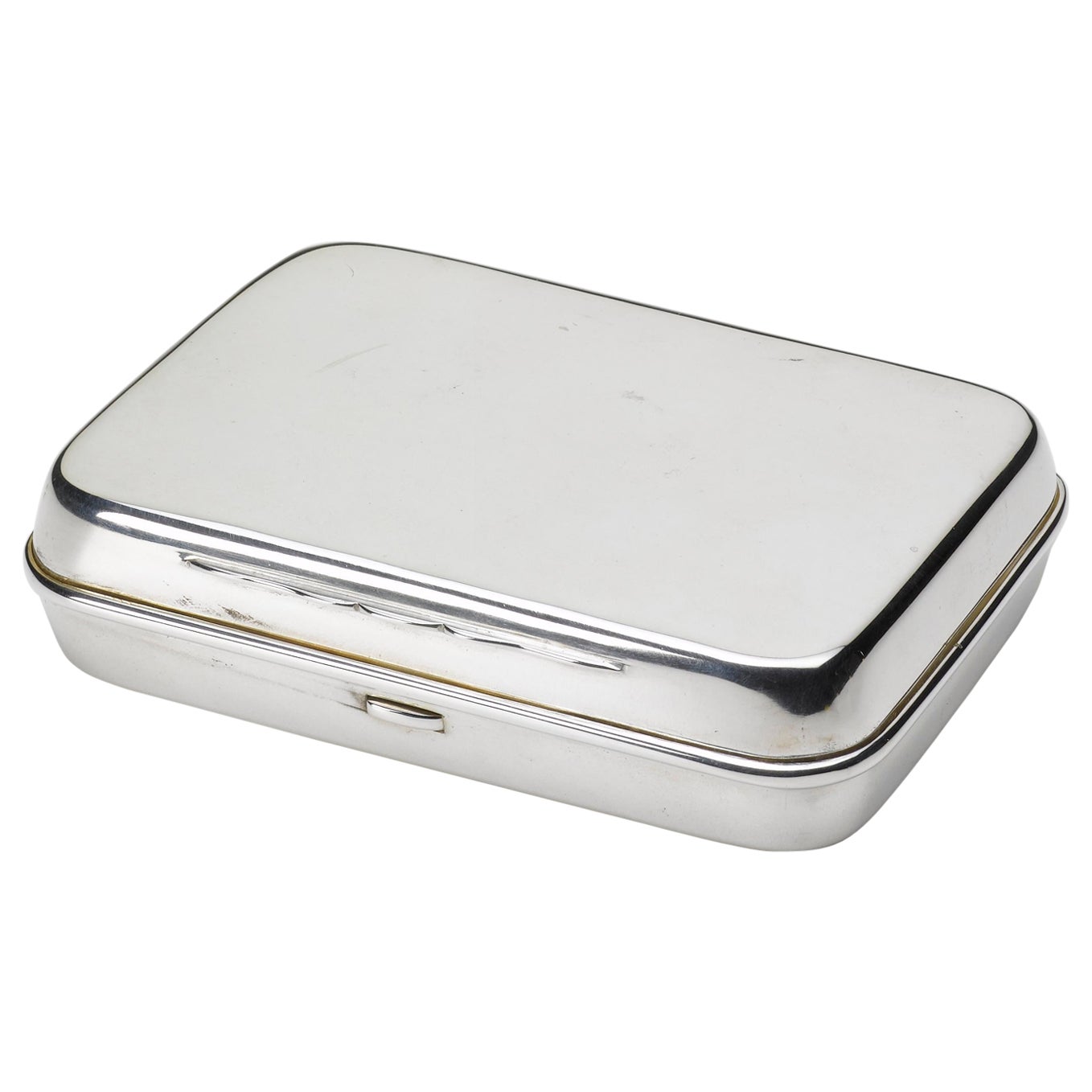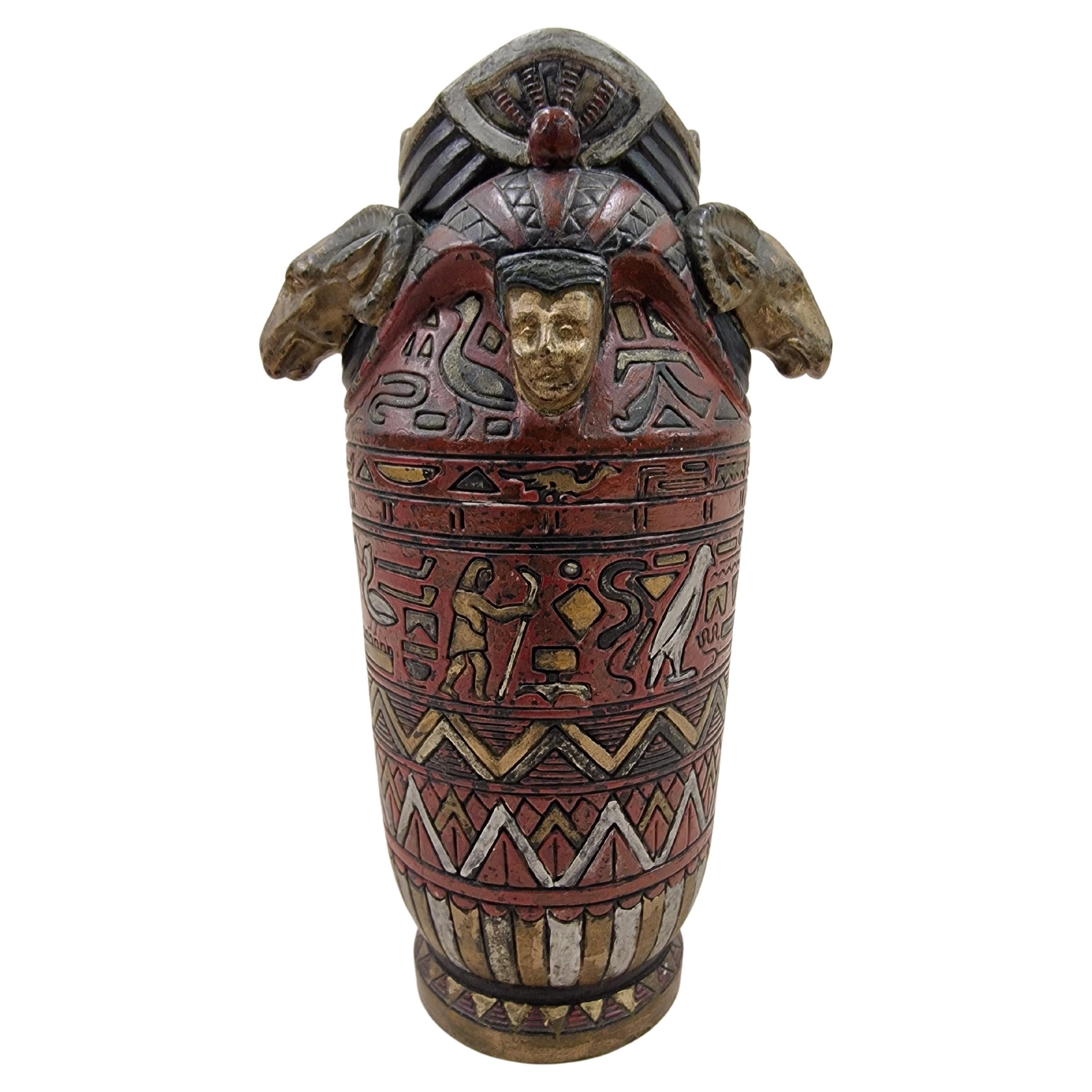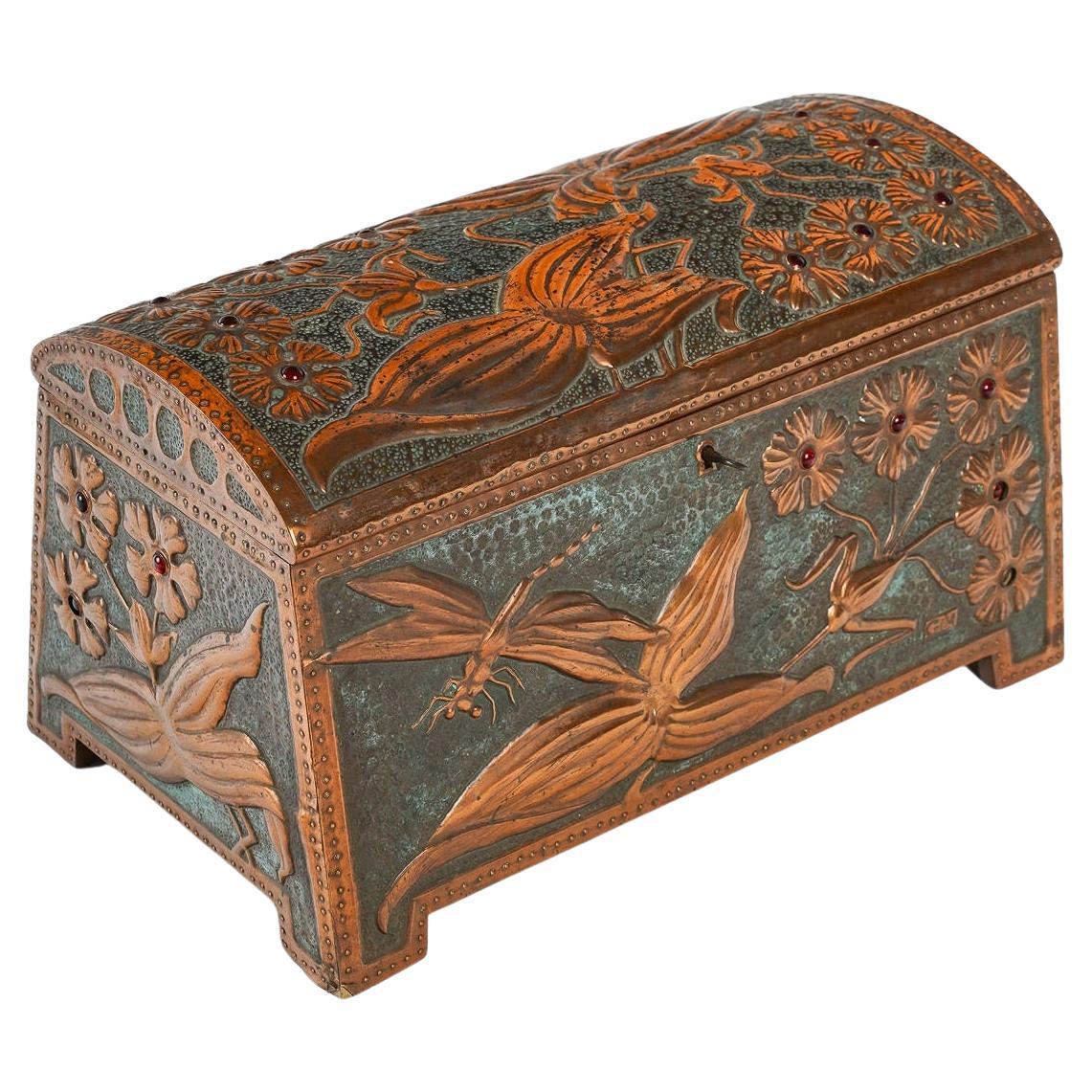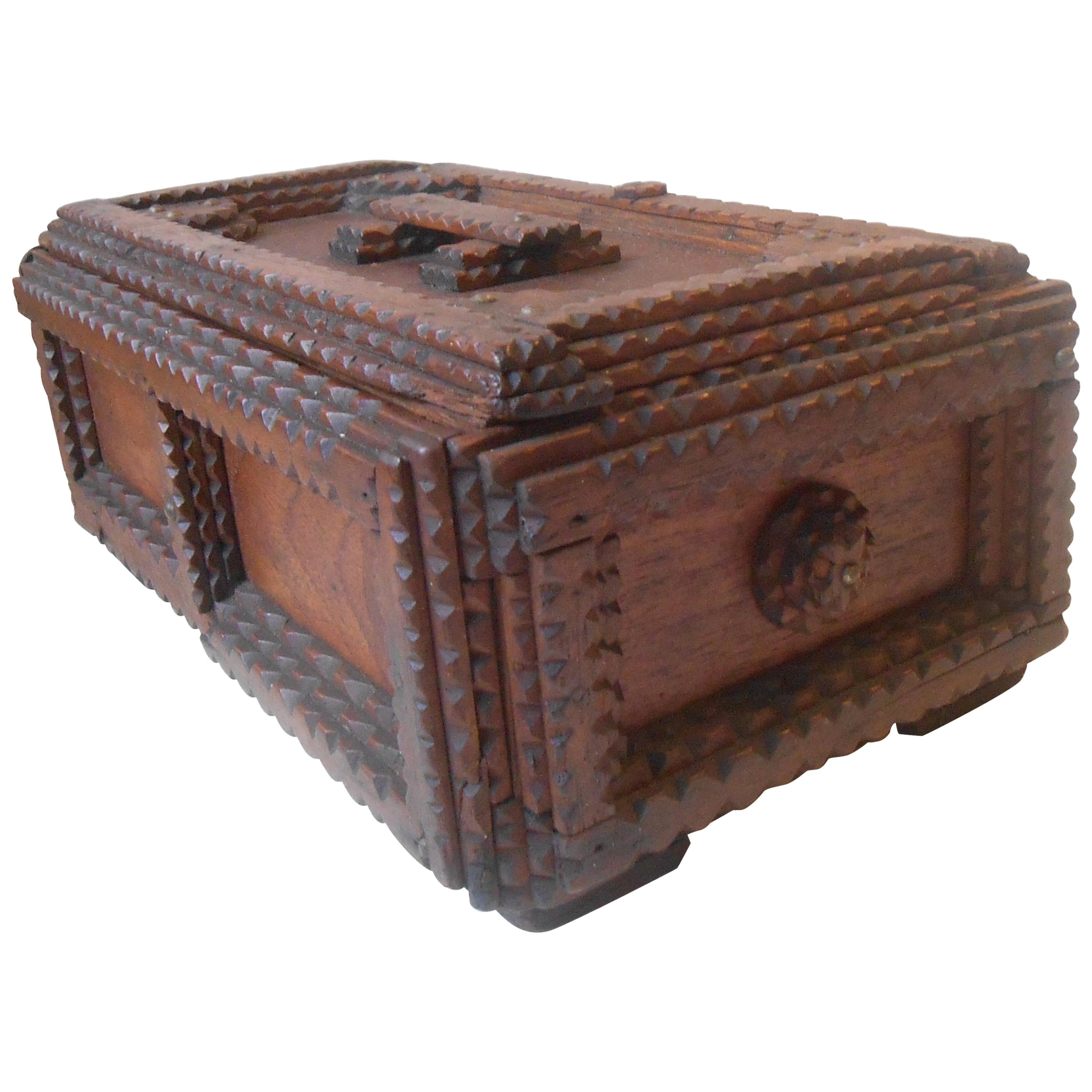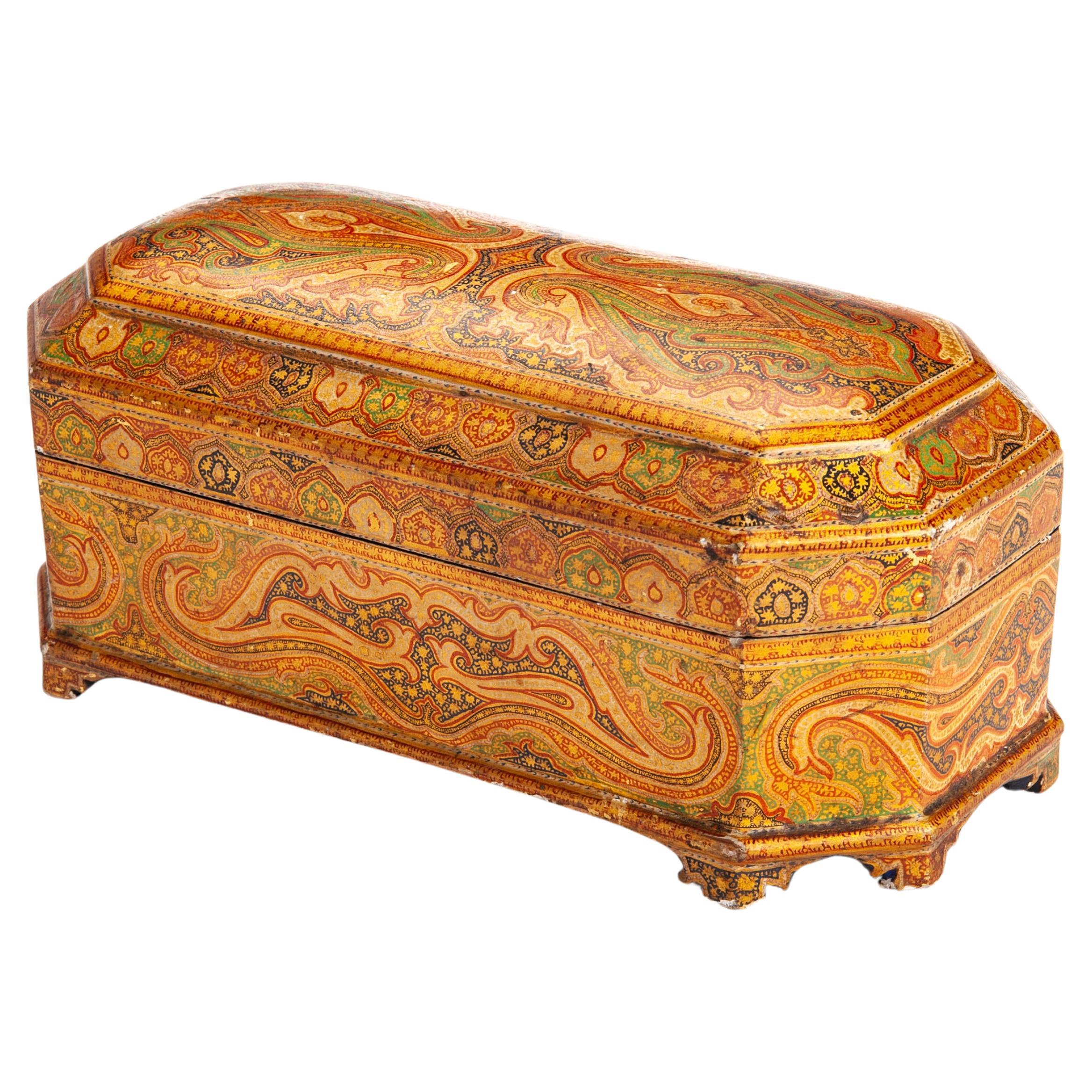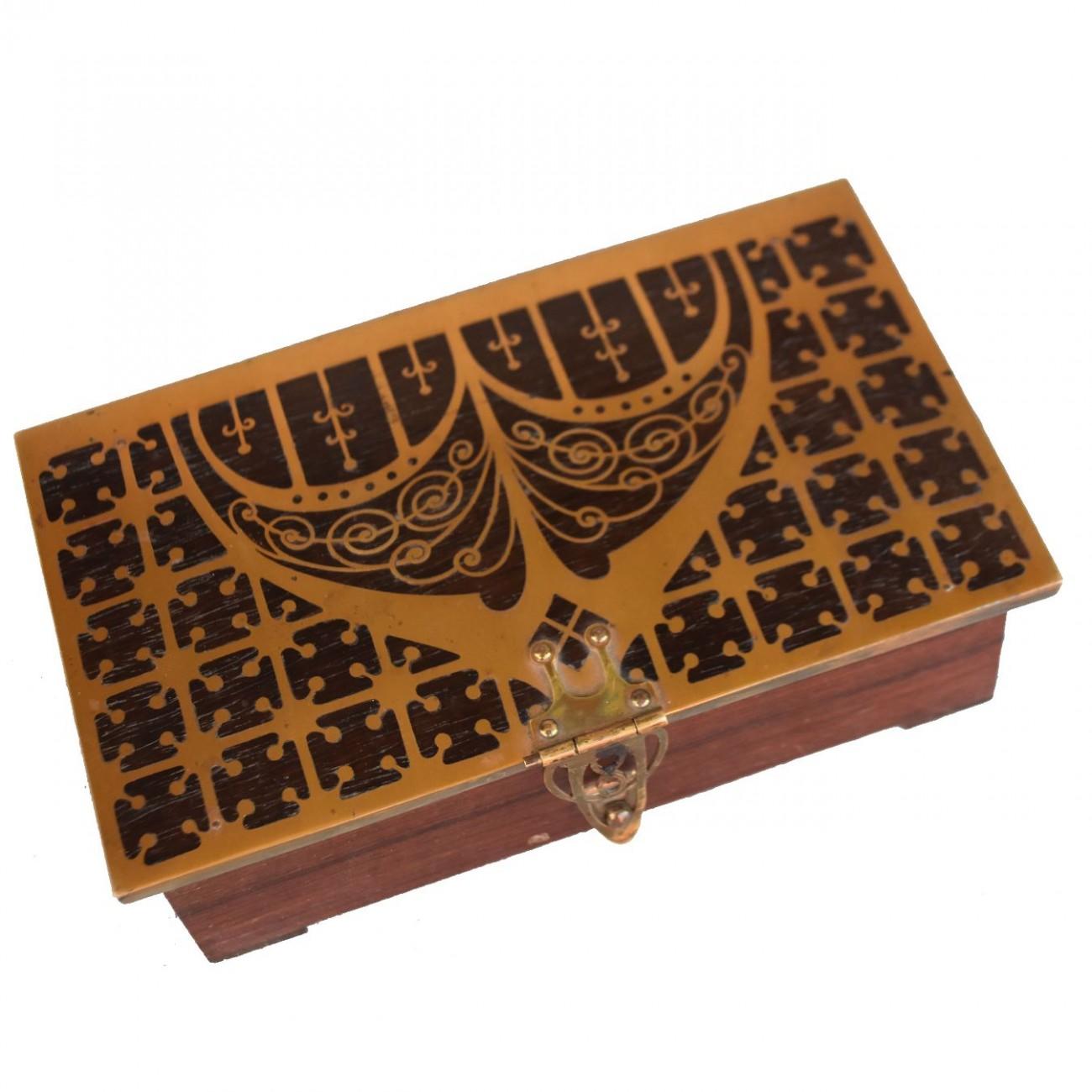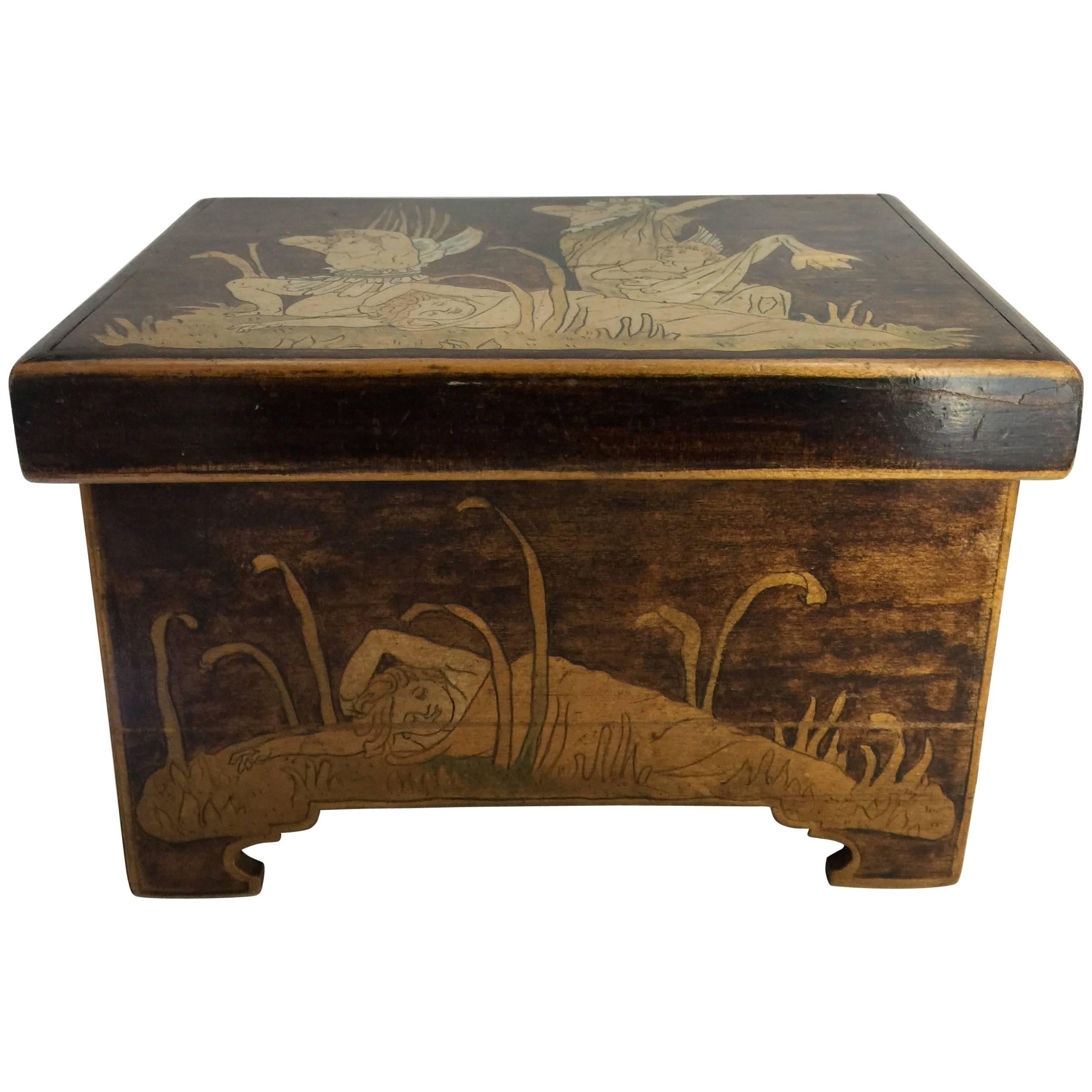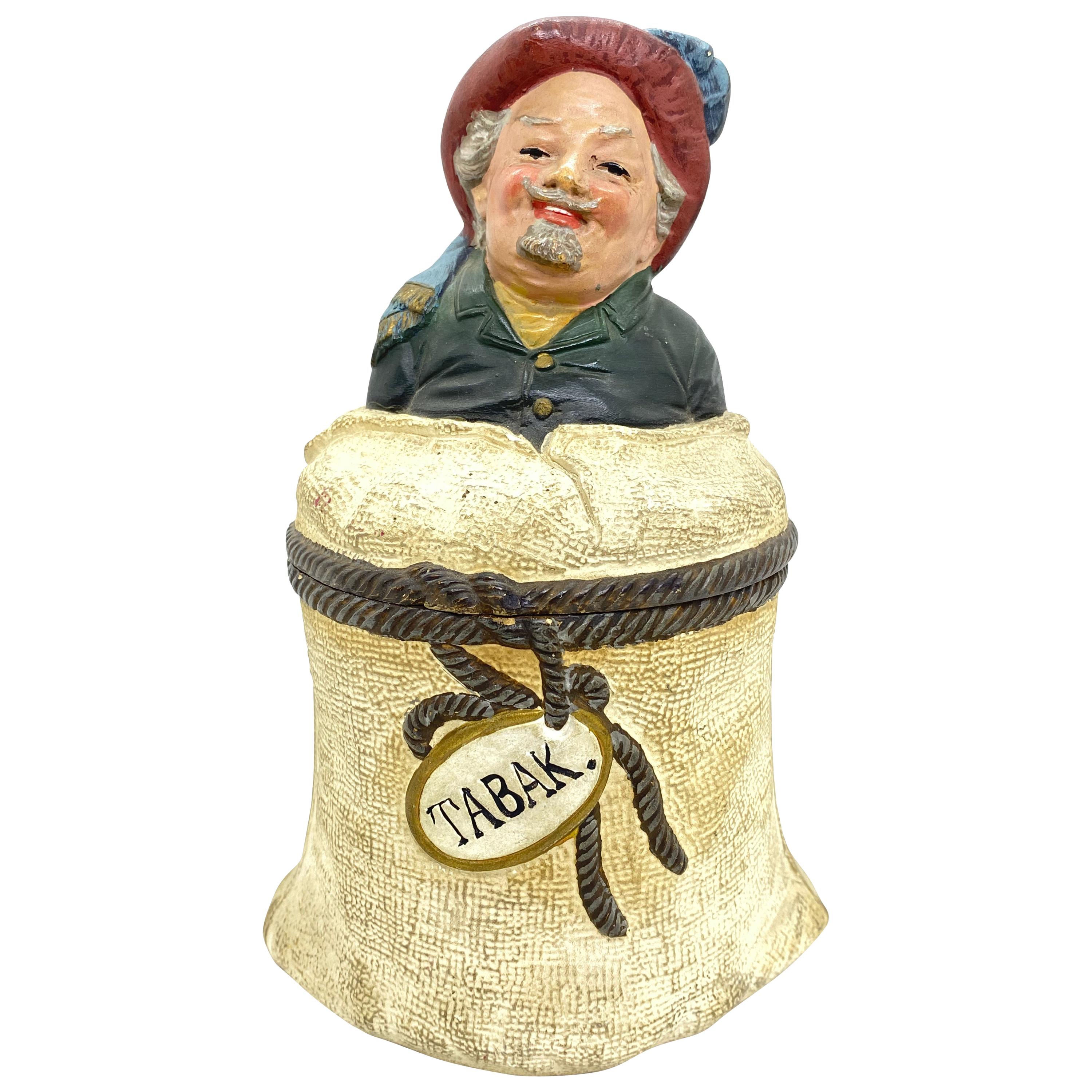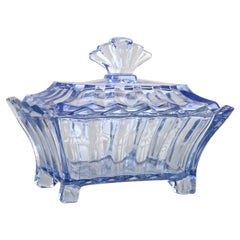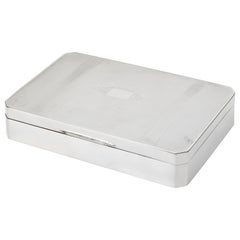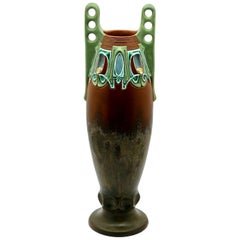
Art Noveuau Box by Julius Dressler, circa 1900, Hallmarked
View Similar Items
Want more images or videos?
Request additional images or videos from the seller
1 of 7
Art Noveuau Box by Julius Dressler, circa 1900, Hallmarked
About the Item
- Creator:Julius Dressler (Maker)
- Dimensions:Height: 7.1 in (18.04 cm)Diameter: 4.7 in (11.94 cm)
- Materials and Techniques:
- Place of Origin:
- Period:
- Date of Manufacture:circa 1900
- Condition:Wear consistent with age and use.
- Seller Location:Lichtenberg, AT
- Reference Number:Seller: XDIBS441stDibs: LU155324583093
About the Seller
5.0
Platinum Seller
These expertly vetted sellers are 1stDibs' most experienced sellers and are rated highest by our customers.
Established in 2015
1stDibs seller since 2015
325 sales on 1stDibs
Typical response time: 3 hours
More From This SellerView All
- Art Deco Blue Glass Box with Lid, Austria, circa 1920Located in Lichtenberg, ATExclusive blue Art Deco glass box with Lid from the period in Austria around 1920. This very decorative, lovely blue pressed glass box impresses wit...Category
Mid-20th Century Austrian Art Deco Decorative Bowls
MaterialsGlass
- Art Nouveau Sculpture "Swordsman", Signed, circa 1900Located in Lichtenberg, ATSuperb Art Nouveau sculpture from France, circa 1900 showing a swordsman holding up his saber. Made in a very detailed manner this great tin cast sculpture shows an unknown lateral s...Category
Early 20th Century French Art Nouveau Figurative Sculptures
MaterialsTin
$1,200 Sale Price29% Off - Art Nouveau Palisander Pedestal, Austria, circa 1900Located in Lichtenberg, ATGreat palisander pedestal from the early Art Nouveau period in Austria, circa 1900. Impressing with a timeless design, this beautiful pedestal convinces with its straight shaped form, veneered in fine palisander. The base shows lovely brass applications on each corner. The top plate floats on four slim rectangular columns, all covered by beautiful brass on both ends. Although this pedestal is nearly 120 years old, it would fit perfect to many kind of interior designs through its everlasting appearance. Useable as a classic flower pedestal but also perfect for displaying your ceramics, busts or other valuable...Category
Early 20th Century Austrian Art Nouveau Pedestals
MaterialsBrass
- Art Nouveau Majolica Amphora Vase by Wilhelm Schiller & Son, Bohemia, circa 1900By Wilhelm Schiller & SonLocated in Lichtenberg, ATLarge colorful Art Nouveau Majolica Amphora vase by Wilhelm Schiller & Son from circa 1900 in Bohemia. Coming in absolute perfect condition, this piec...Category
Early 20th Century Czech Art Nouveau Vases
MaterialsMajolica
- Art Nouveau Bentwood Side Table/ Plant Stand by Mundus, Austria, circa 1900Located in Lichtenberg, ATBeautiful designed Art Nouveau bentwood side table or plant stand from the early 20th century in Austria. Made of fine bentwood by the renown company of MUNDUS around 1900, this uniq...Category
Early 20th Century Austrian Side Tables
MaterialsBentwood
- Art Nouveau Cabinet or Buffet by August Ungethüm Mahogany, Austria, circa 1900By August Ungethüm, August Ungethüm Kunstmöbel-FabrikLocated in Lichtenberg, ATMesmerizing Art Nouveau cabinet or buffet by August Ungethüm from Austria, circa 1900. Designed and produced by the famous art furniture factory of A. ...Category
Early 20th Century Austrian Art Nouveau Sideboards
MaterialsCopper
You May Also Like
- Hallmarked Silver Plated Keepsake Box, Sheffield, UK, circa 1900Located in Colorado Springs, COOffered is a stunning silver plated keepsake box dating to 1900, with associated hallmark. This small box includes a wooden interior with two slots and a blank square on top where initials could have been engraved. A well maintained, elegant piece, this antique silver box is an excellent addition to any silver or home decor collection. Trinket or keepsake boxes have taken on many forms since their first conception in ancient times. However their purpose remains the same; to store jewelry and other items precious to the owner. Originally, these boxes were used specifically for jewelry. These were in common use as early as 5000 BC in Ancient Egypt, when the majority of Egyptians, both male and female, wore jewelry. Boxes were used to keep these gemstone encrusted items safe. In Ancient Rome, jewelry was a status symbol. Rings and brooches were utilized to represent ones status in society. Again, boxes were needed for security and storage purposes. Finding early examples of these are quite rare. Victorian and Edwardian examples of trinket boxes are far more common. This is because owning jewellery was a luxury until the Victorian era- let alone possessing so much a box was needed to store it all. Fine jewelry and other items became available to the masses after the industrial revolution due to the reduction in production costs. This led to a demand for trinket boxes, which were much smaller than jewelry boxes and therefore better suited to the needs of the middle class who did not yet possess an abundance of jewelry. In Victorian households, collectables and other items of interested were also stashed inside these boxes. This is why they are known as trinket or keepsake boxes, rather than just jewelry boxes, although of course jewelry was also stored in them. Trinket boxes were produced in large numbers around this time. Many were lined with colored plush or velvet or rich wood. More elaborate designs had interior divisions and trays for rings and other pieces of jewellery. It was also common to see trinket boxes so small that they could only contain one item, such as a single ring. Ornate exteriors were created to reflect the value of the trinket boxes contents. The Edwardian era saw the introduction of new styles of trinket box. These included small circular or oblong boxes...Category
Antique Early 1900s English Art Deco Decorative Boxes
MaterialsSilver
$600 Sale Price20% Off - Hallmarked Silver Plated Keepsake Box, Sheffield, Uk, Circa 1900Located in Colorado Springs, COOffered is a stunning Sheffield silver keepsake box dating to 1900, with associated hallmark. This small box includes a clean interior and rounded corners. The box is free of names or initials, but would have been used to house keepsakes such as jewelry or cufflinks. A well maintained, elegant piece, this antique silver box is an excellent addition to any silver collection. Trinket or keepsake boxes have taken on many forms since their first conception in ancient times. However their purpose remains the same; to store jewelry and other items precious to the owner. Originally, these boxes were used specifically for jewelry. These were in common use as early as 5000 BC in Ancient Egypt, when the majority of Egyptians, both male and female, wore jewelry. Boxes were used to keep these gemstone encrusted items safe. In Ancient Rome, jewelry was a status symbol. Rings and brooches were utilized to represent ones status in society. Again, boxes were needed for security and storage purposes. Finding early examples of these are quite rare. Victorian and Edwardian examples of trinket boxes are far more common. This is because owning jewellery was a luxury until the Victorian era- let alone possessing so much a box was needed to store it all. Fine jewelry and other items became available to the masses after the industrial revolution due to the reduction in production costs. This led to a demand for trinket boxes, which were much smaller than jewelry boxes and therefore better suited to the needs of the middle class who did not yet possess an abundance of jewelry. In Victorian households, collectables and other items of interested were also stashed inside these boxes. This is why they are known as trinket or keepsake boxes, rather than just jewelry boxes, although of course jewelry was also stored in them. Trinket boxes were produced in large numbers around this time. Many were lined with colored plush or velvet or rich wood. More elaborate designs had interior divisions and trays for rings and other pieces of jewellery. It was also common to see trinket boxes so small that they could only contain one item, such as a single ring. Ornate exteriors were created to reflect the value of the trinket boxes contents. The Edwardian era saw the introduction of new styles of trinket box. These included small circular or oblong boxes...Category
Antique Early 1900s British Art Deco Decorative Boxes
MaterialsSilver
- Large Amphora Austria Vase Attributed to Julius Dressler, circa 1905By Amphora Austria Manufactory, Julius DresslerLocated in Verviers, BEJulius Dressler's factory opened in Biela, Bohemia in 1883 and closed in 1944. His work was influenced by the Art Nouveau and Vienna Secessionist movements. Style-looks, simply s...Category
Antique Early 1900s Austrian Art Nouveau Ceramics
MaterialsCeramic
- Flower Vase, Egyptian Décor, Majolica, Julius Dressler, circa 1890, BohemiaBy Julius DresslerLocated in Wien, ATVery interesting majolica vase, made by famous Julius Dressler from Bohemia, in the end of the 19th century. Due to the boom and the particularly great interest in the Egyptian exc...Category
Antique 1890s Czech Belle Époque Vases
MaterialsMajolica
$800 Sale Price20% Off - Art Nouveau Repoussé Copper Box, circa 1900.Located in Saint-Ouen, FRArt Nouveau repoussé copper box, circa 1900. Art Nouveau style box, 1900, embossed copper on a wooden interior, red glass cabochons, with key. D...Category
20th Century French Art Nouveau Decorative Boxes
MaterialsCopper
- Wooden German Folk Art Coffin - Box, circa 1900Located in Esbjerg, DKGerman Volk art box. Scaled down coffin. Hand carved with characteristic primitive detailing. Measurements: H 5 inches, W 10.25 inches, D 6.2 inches.Category
Antique Early 1900s German Folk Art Decorative Boxes
MaterialsWood
$385 Sale Price20% Off
Recently Viewed
View AllMore Ways To Browse
Czech Majolica
Julius Dressler
Julius Dressler Majolica
Antique Brass Pin
Antique Brass Pins
18th Century Small Box
House Shaped Box
Anglo Bone
Mother Of Pearl Inlaid Box
Brass Inlaid Wood Box
Antique Silver Boxes Solid Silver
Antique Solid Silver Boxes
Limoge Porcelain Box
Antique Solid Silver Box Boxes
Antique Solid Silver Boxes Boxes
Antique Solid Silver Box
Antique Solid Silver Boxes Solid Silver
Antique Silver Box Solid Silver

